Samsung, the world leader in the TV market, has introduced an impressive new line of SUHD TVs. Samsung's 2016 SUHD TVs offer unparalleled picture quality with Quantum Dot Displays, the world's first edge-to-edge curved design and easy access control. entertainment content. In addition, the entire line of 2016 SUHD TVs supports Internet of Things technologies, which allows the TV to become the hub of a smart home.
"IN the latest models Samsung's 2016 TVs will not feature 3D functionality. We made this decision based on the limited consumer demand for 3D, as well as the small amount of content that is produced in this format. Instead, we are investing in the production of TVs with a new type of display (Quantum Dot Display)... 2016 SUHD TVs are primarily innovations in the field of better picture quality, which is very important for consumers,” said Hyun-suk Kim Kim, head of Visual Display Business at Samsung Electronics. “This year we are going beyond anything we have ever done before to bring you the epitome of brilliant design and high-tech technology.”
Unrivaled picture quality on Samsung SUHD TVs with Quantum Dot Displays
Samsung's 2016 SUHD TVs feature the world's only cadmium-free 10-bit quantum dot display, delivering the most true-to-life picture quality with stunning brightness, contrast and exceptionally true-to-life colors.
The 2016 models guarantee an optimal viewing experience regardless of lighting conditions. They are capable of delivering high dynamic range (HDR) with a minimum of 1000 nits to enhance the contrast between light and dark images. New technology UltraBlack significantly reduces glare and reflection for improved picture quality.
Single access and remote control
TVs built on the Tizen operating system Samsung Smart TV2016 provides users with simplified access to content and services - now everything is in one place.
SmartHub 2016 makes accessing the content you need easy and convenient. Online television, OTT (overthetop content sources other than TV), games - Samsung SmartTV allows you to access your favorite programs from the moment you turn on the TV.
New Samsung SmartTV eliminates the need to use different remote controls remote control. Samsung smart TVs automatically detect the type of router, game console, OTT device or home theater device that is connected to the TV. By using Samsung features Smart Control users can manage all devices without additional settings.
Now users have access to the most realistic gaming experience on big screen without having to purchase a console. More than 500 online and downloadable games will be available on 2016 SamsungSmartTVs. The latest additions to PlayStationTM include Assassin's Creed III, Batman: Arkham Origins, The LEGO Movie and many more.
SmartView app. The updated app allows users to share their favorite content with family. SmartView is available for SamsungGalaxy, Android and iOS devices, as well as for Windows PC. Popular applications and sites, including AccuWeather, Crackle, iHeartRadio, M-GO, Plex, Pluto.TV, UFC, Vimeo, YuppTV and others will allow users to enjoy their favorite applications and services.
Watching UHD movies and TV programs from providers like Amazon, M-GO or Netflix, as well as accessing YouTube content and online programming from Dish and Time Warner Cable have become much more convenient. UHD technologies developed by Neu Lion allow sports programs to be included via UHD live. Users can additionally connect new Ultra Samsung HD Blu-Ray player using HDMI (2.0a) to access UHD movies with HDR.
TV becomes the hub of a smart home
All 2016 SUHD TVs embody the future of Internet of Things technology and Samsung's open Smart Things platform. SUHD TVs connect and control more than 200 compatible Smart Things devices. Now the TV allows you to see who is ringing the doorbell, lock all the locks or turn off the lights.
Ultra HD Premium
The UHD Alliance presented requirements at the 2016 Consumer Electronics Show (CES) for devices that must meet the "Ultra HD Premium" standard. What should be the main specifications of devices that meet Ultra HD Premium?
Here are some necessary Ultra HD Premium requirements:
- Minimum resolution 3840 x 2160. This parameter is the easiest to understand, since it is just resolution - the number of pixels that form a television picture - the image on the screen of a 4K/Ultra HD TV. There can be no confusion in this area.
- 10-bit color depth. This means that the TV must be able to receive and process a 10-bit color signal, and this parameter indicates the number of colors that form this signal. For example, Blu-ray discs use an 8-bit color signal consisting of more than 16 million individual colors.
A 10-bit color signal, often called “deep color,” consists of more than a billion colors and shades. This does not mean that the TV must display all these colors - however, it must be able to process this signal. Most decent models can do this, so there shouldn't be any problems here. - Minimum 90% P3 colors. P3 is what is known as a "color space", a standard that defines color information in a video stream. The function of color space is to ensure that the image displayed correctly on the screen in your home. Think of color space as a language of color—a language that follows the same rules as English or any other spoken language.
To qualify as Ultra HD Premium, a TV must be able to display 90% of the colors defined by the P3 color space. This quantity is usually called the color gamut - those sets of colors that the display is capable of displaying in practice. So a TV that is capable of displaying "90% of P3 colors" is, simply put, displaying 90% of the entire color gamut.
The higher the number, the more saturated and neat the digital palette looks on the TV screen. - Minimum dynamic range. To determine whether a TV complies with the standard, you must check its compliance minimum requirements, regulating the maximum and minimum brightness levels that it is capable of displaying.
There are two different standards:- Option 1: More than 1,000 nits of peak brightness and less than 0.05 nits of black level.
- Option 2: More than 450 nits of peak brightness and less than 0.0005 nits of black level.
The two standards were created to take advantage of the advantages and disadvantages of various technologies used to create televisions. Light-emitting diode (LED) TVs, which are the majority of TVs sold today, maintain higher levels of maximum brightness, but lag behind in terms of black levels. At the same time, TVs with organic light-emitting diode (OLED) screens are capable of producing incredibly deep black shades. At the same time, these models are inferior in terms of maximum screen brightness.
VA LED panel
Vertical Alignment (VA) technology was first used by Fujitsu back in 1996 as a compromise between TN and IPS. Compared to TN panels, VA panels allow the user to be further away from the center of the screen to see color shifts. VA panels practically do not lag behind their TN counterparts in terms of response time, but significantly exceed them in depth and accuracy of color reproduction. At the same time, the disadvantage of VA panels is, firstly, the loss of details in the shadows when looking at the screen perpendicularly, and secondly, the noticeable dependence of the color balance of the “picture” on the viewing angle.
An improved version of VA panels S-PVA (Super Pattern Vertical Alignment) is now widely used by Sony and Samsung. S-PVA features wider viewing angles and deeper blacks. Both companies often state that their S-PVA TVs have viewing angles of 178 degrees horizontally and vertically, and this parameter these panels are not inferior to their IPS counterparts. Sharp also produces its version of VA panels - Axially Symmetric Vertical Alignment - with similar technical and consumer characteristics.
Samsung 2016 TVs with SUHD support
| KS9800 | KS9500 | KS9000 | KS8000 | KS7500 | KS7000 | |
|---|---|---|---|---|---|---|
| 4K support | There is | There is | There is | There is | There is | There is |
| There is | There is | There is | There is | There is | There is | |
| There is | There is | There is | There is | There is | There is | |
| Local dimming technology | There is | There is | ||||
| 10-bit color depth | There is | There is | There is | There is | There is | There is |
| Tizen operating system | There is | There is | There is | There is | There is | There is |
| Two tuners | There is | There is | There is | There is | ||
| Panel type | VA LCD | VA LCD | VA LCD | VA LCD | VA LCD | VA LCD |
| Peak Illuminator technology | Ultimate | Ultimate | Pro | Pro | Pro | Pro |
| CPU | Quad | Quad | Quad | Quad | Quad | Quad |
| Remote control | Multi | Multi | Multi | Multi | Multi | Multi |
| Backlight type | FALD (Full-array local dimming) | Edge LED | Edge LED | Edge LED | Edge LED | |
| Panel design | curved | curved | curved | flat | curved | flat |
| WiFi | yes (802.11ac) | yes (802.11ac) | yes (802.11ac) | yes (802.11ac) | yes (802.11ac) | yes (802.11ac) |
| 2700 | 2700 | 2400 | 2300 | 2200 | 2100 | |
| VESA standard support | 400x400 | 400x400 | 400x400 | 400x400 | 400x400 | 400x400 |
| DCI-P3 (P3 color space) | 96% | 96% | 96% | 96% | 96% | 96% |
| Diagonal | 88" | 55", 65", 78" | 49", 55", 65", 78" | 49", 55", 65", 75" | 43", 49", 55", 65" | 49", 55", 60", 65" |
| Sound output power | 70 W | 60 W | 60 W | 60 W | 40 W | 40 W |
Samsung 2016 TVs with UHD and HD support
| KU6670 | KU6500 | KU6400 | KU6170 | KU6070 | KU6300 | K5500 | K5100 | |
|---|---|---|---|---|---|---|---|---|
| Panel design | curved | curved | flat | curved | flat | curved | flat | flat |
| 4K support | There is | There is | There is | There is | There is | No | No | No |
| HDR (High Dynamic Range) | There is | There is | There is | There is | There is | |||
| UHD Premium Compliant | No | No | No | No | No | No | No | No |
| Backlight type | Edge LED | Edge LED | Edge LED | - | - | - | - | - |
| PQI (Picture Quality Index) | 1600 | 1600 | 1500 | 1400 | 1300 | - | - | - |
| 8-bit color depth | There is | There is | There is | There is | There is | There is | There is | There is |
| Panel type | VA LCD | VA LCD | VA LCD | VA LCD | VA LCD | VA LCD | VA LCD | VA LCD |
| Tizen operating system | There is | There is | There is | There is | There is | There is | There is | There is |
| Two tuners | ||||||||
| Remote control | Multi | Multi | Multi | Standard | Standard | Standard | Standard | Standard |
| Sound output power | 20 W | 20 W | 20 W | 20 W | 20 W | 20 W | 20 W | 20 W |
| WiFi | yes (802.11ac) | yes (802.11ac) | yes (802.11ac) | yes (802.11n) | yes (802.11n) | yes (802.11n) | yes (802.11n) | yes (802.11n) |
| VESA standard support | 400x400 | 400x400 | 400x400 | 400x400 | 400x400 | 400x400 | 400x400 | 400x400 |
| Diagonal | 43", 49", 55", 65" | 43", 49", 55", 65", 78" | 40", 49", 55" | 40", 49", 55", 65" | 40", 43", 50", 55", 60", 65", 70" | 40", 49", 55" | 32", 40", 49", 55" | 32", 40", 49", 55" |
What's happenedSUHDTVsSamsung.
This line first appeared in 2015 and was represented by the JS7200, JS8500, JS9000 and JS9500 series in our market.
A distinctive feature of these models was support for HDR materials of the HDR10 standard, high peak brightness and a wide color gamut for display more shades in 4k materials.
HDR TVs, when playing the appropriate material, produce a brighter and more detailed picture in the light areas of the scene, while at the same time greater detail in the dark areas. At least that's how it's intended.
There are still certain problems with synchronization - for example, when playing a 4K HDR disc from a UBD-K8500 Blu-ray, the extended dynamic range mode may not turn on or lead to significant image deterioration in terms of white balance and the number of gradations displayed. The output peak brightness is also not stable - repeating playback of the same section of the scene, you can get both 800 and 1200 cd/m2.
Undoubtedly, these playback nuances should be eliminated in the next firmware. When playing HDR materials online (Netflix), there are significantly fewer problems.
All SUHD TVs are automatically 4k TVs, that is, their matrix resolution is 3840x2160 pixels. Therefore, SUHD and SUHD 4K are the same thing. Both abbreviations can be found on the Internet.
Model overview Samsung SUHD TVs 2016.
As in 2015, Samsung SUHD TVs include several series. However, if last year the only flat-screen SUHD TV for our market was the JS7200 with a predominantly PLS and necessarily 60 Hz matrix, then all new KS models have acquired 120 Hz matrices of the –VA family.
VA matrices have several times greater contrast, which allows you to more comfortably view dark scenes in films, as well as see more details in HDR materials. The downside of –VA matrices is smaller viewing angles relative to IPS/PLS.
TVs with 120Hz panels improve motion processing by inserting additional frames and adjusting the flicker speed of the backlight - reducing jerking in fast scenes and increasing overall clarity.
So, all new Samsung TV models of 2016 have the letter K in the article number. SUHD models add S - 55KS7000 to it. Regular 4k TVs received the letter U instead of S - 49KU6450. FullHD models have only one letter indicating the year - K: 40K5500.
The 2015 models are still available and have a J instead of a K (65JS9500).
Just like last year, it all started with a leapfrog in the articles for different regions. By the middle of the year, everything more or less came to a common denominator.
Spy runs on sites in the USA, Britain, and Europe revealed some consistency.
In the USA, the representative of the highest price segment is the KS9800 series in diagonals of 65, 78 and 88 inches. The main difference is the controlled carpet lighting, FALD. 600 LEDs divided into 150 zones. Each zone, depending on the scene, adjusts the brightness of the LEDs from minimum to maximum. Among LCD TVs, it is these TVs that provide the maximum positive emotions when viewing HDR and standard high-quality materials in any lighting conditions.
Next comes the KS9500 series, but with Edge backlighting. If previously Samsung implemented similar backlighting on both sides of the screen, now, like most Edge TVs, it is located at the bottom. Double-sided Edge made it possible, when the corresponding function was enabled in the menu, to turn off the LEDs at the top and bottom, where the black bars from wide-screen films are usually located. Thus, the picture was perceived more interesting and without possible micro-lights.
Of course, this feature had to be abandoned in the new 4K Samsung TVs of 2016 in exchange for a thinner body. Bonus - the backlighting has become more uniform, which is important when watching movies, especially in complete darkness.
KS9500 is available in diagonals of 55, 65, 78 inches. Its flat counterpart is the KS9000. The diagonals are 55, 65 and, this time, 75’.
Next come the same models, but in a slightly different case with legs located at the edges - the KS8500 and KS8000 series. Curved and flat, respectively. KS8500 in three diagonals - 49, 55 and 65 inches. Flat versions of the KS8000 in four: 49, 55, 60 and 65.
Below the 8 series there are no longer SUHD, but regular 4K TVs KU7500/KU7000 with 60 Hz matrices.
Why all this description of American models? In the USA, the widest assortment list is time. Secondly, many of the readers are in different regions or order equipment from other countries. Therefore, in order to understand exactly what you will get in the end, you need to be attentive to the indexes.
Now let's find out how things are going with Samsung 2016 SUHD TVs in our region.
On the official website there is only one option for the top FALD version - 88KS9800.
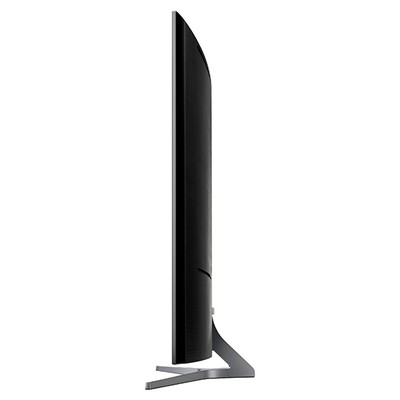
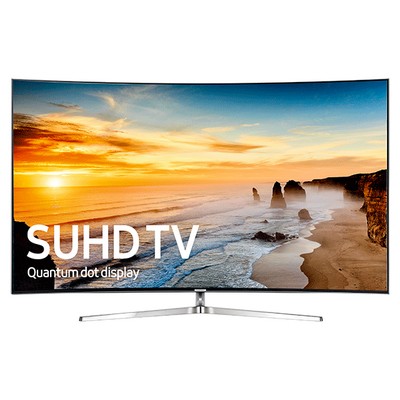
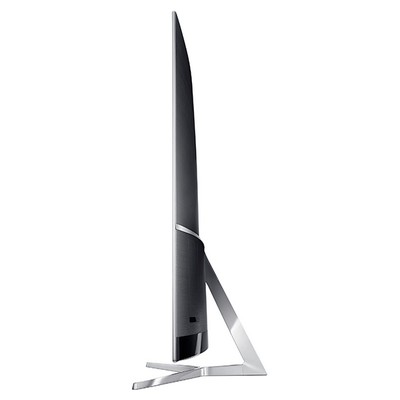
Its flat counterpart is the KS8000. Almost in the same diagonals - instead of 78 there is 75 (49KS8000, 55KS8000, 65KS8000, 75KS8000).


KS7500 is available in diagonals 49, 55 and 65 (49KS7500, 55KS7500, 65KS7500),

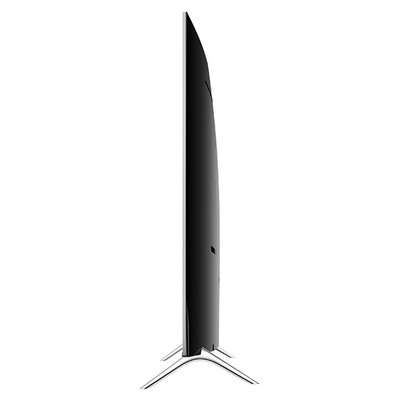
and KS7000 - in 49, 55 and 60 (49KS7000, 55KS7000, 60KS7000).

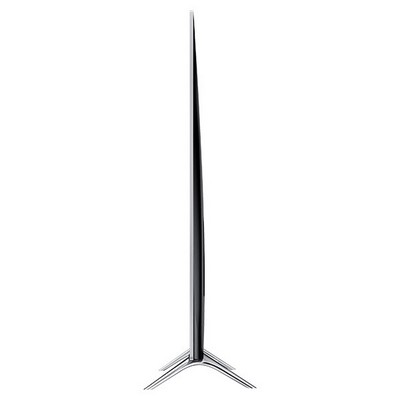
This is where our 2016 Samsung SUHD TVs end.
In Poland, FALD comes in two series - like ours, 88KS9800 and in 65 diagonal - 65KS9500. There are no FALD models at all on the official Finnish website yet, and the rest come with a 5 at the end of the article - 60KS7005. If you order our models, make sure that they are assembled in Kaluga.
The easiest way to recognize the FALD model is by its noticeably thicker body. The back cover in the top version does not have a horizontal stripe, and the connectors are located in the middle part of the cover, rather than in the bottom corner.
FALD KS9800 (some have KS9500):

Edge KS9000 (some have KS9500):
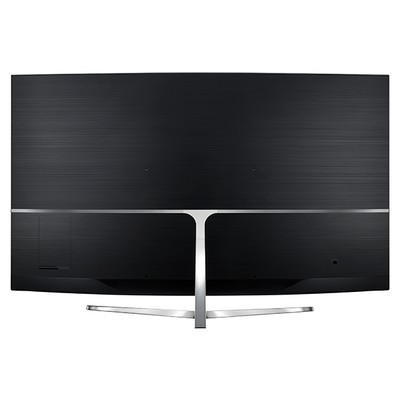
This year, Samsung again has a non-standard wall mount - the bushings are even more recessed into the body, with the lower ones deeper than the upper ones (due to the bend of the screen and the design of the back cover). However, the kit includes special plastic extension tubes, with the help of which the difference between the lower holes and the upper ones is equalized. Recommended screws – M8 45 - 50 mm.
VESA for wall mounting TVs:
88KS9800: 600x400, weight approximately 59 kg.
78KS9000: 600x400, weight approx. 44 kg.
65KS9000: 400x400, weight approx. 26 kg.
55KS9000: 400x400, weight approx. 18 kg.
49KS9000: 400x400, weight approx. 15 kg.
75KS8000: 400x400, weight approx. 41 kg.
65KS8000: 400x400, weight approx. 26 kg.
55KS8000: 400x400, weight approx. 18 kg.
49KS8000: 400x400, weight approx. 15 kg.
65KS7500: 400x400, weight approx. 23 kg.
55KS7500: 400x400, weight approximately 17 kg.
49KS7500: 400x400, weight approximately 14 kg.
60KS7000: 400x400, weight approx. 22 kg.
55KS7000: 400x400, weight approx. 17 kg.
49KS7000: 400x400, weight approx. 14 kg.
Improvements inSUHDTVsSamsung2016 compared to last year.
|
curved |
curved |
curved |
curved |
||||
|
backlight |
|||||||
|
Peak brightness at 50% of screen area |
360 cd/m2, max – 530 cd/m2 |
350 cd/m2, max – 450 cd/m2 |
380 cd/m2, max – 730 cd/m2 |
510 cd/m2, max – 1470 cd/m2 |
530 cd/m2, max 1490 cd/m2 |
max – 1455 cd/m2 |
|
|
Color coverage Rec 2020(xy, uv) |
|||||||
|
Black depth |
|||||||
|
Panel response |
|||||||
|
Improved anti-glare filter |
|||||||
|
Smart Tizen |
|||||||
As you can see, this year the 3D function has completely disappeared. The second generation Tizen smart, as well as the interface, has become much faster and more modern. Decent options have appeared in a flat case - last year Samsung representatives stated that they were inappropriate for our market.
The new remote control with a radio module (TM1680A) does not have a touch button (and does not fit older TV models):
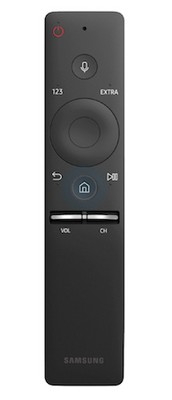
Peak brightness increased noticeably, and black depth and uniformity improved slightly.
Instead of 48 inches, Samsung switched to 49 in 2016.
For comparison, the price of a curved SUHD Samsung TV 55KS7500 2016 on the Yandex market starts from 117,000.
The cost of last year’s analogue, 55JS8500, is from 97,000 (with 3-D).
It is interesting that the price for the flat 55KS7000, which should be an ideal option in terms of price/quality ratio, still starts at 160,000 (in stores with 5 stars) - there are too few offers. In less “stellar” places the price tag starts from 105,000.
Those users who are currently choosing new TV, have an incredibly rich range of models: devices are currently available with HD, Full HD resolution or a wide variety of diagonal sizes and designed for different budgets. No matter how much I write about projector-based home theaters, the most popular leisure device is the TV, which modern form is supplemented by the prefix .
TV with the most popular on given permission Full HD, which has excellent image quality and a screen diagonal of up to 55 inches, can be purchased from 20,000 rubles, but adding only 10 inches to the diagonal you will have to part with an amount of 120,000 rubles.
They are in no hurry to fall in price: in the price range from 100,000 to 200,000 rubles you can find a decent model with a diagonal of 55 to 65 inches; TVs with even larger screen diagonals are incredibly expensive. For those who are satisfied with a bird in their hands, I recommend a TV with an UltraHD matrix with a diagonal of up to 49 inches, which will cost a little more than 50,000 rubles. In this article I will try to talk about the most interesting TV models with Full resolution HD and UHD with diagonals from 32 to 65 inches.
Picture quality of modern TVs
Can't decide between a Full HD or UHD TV? Believe me, both models provide good image quality. One of the latest models of Full HD TVs that I had to deal with is a 65-inch model. I am delighted with the quality: high contrast, excellent color reproduction and image clarity. In the comments to the article, many people ask about budget 32-inch TV models for use in the kitchen or country house; I can recommend the Samsung UE32J5100AK to such users, however, if they are ready to give up connecting to home network and connections to the Internet. To be honest, I have always been a little worried about the functionality of smart TVs, since all the capabilities that they have can be acquired by purchasing compact body flash drive or small box.
Some TV models with UHD resolution do not always work flawlessly with HD and SD content playback due to poor clarity of moving objects - a small thing, of course, but then why am I writing articles about TVs at all. The same cannot be said about the magnificent picture of the LG 55UG870V TV, which demonstrates best quality images in all resolutions.
Functionality and equipment of smart TVs
Functionality modern TVs so wide that they will make any average buyer confused. The equipment of the Full HD and Ultra HD models is no different: the usual Smart TV functionality, media player capabilities and additional ways to control the TV are present everywhere. Elder Samsung models and LG offer their OS: Tizen and WebOS, respectively. Sony, along with Philips, recommend that buyers use Android capabilities TV. It is worth noting, which offer not only excellent equipment with Ambilight, but also high quality images at an affordable price.
Blu-ray Discs and UHD Players
There are more and more TVs with UHD resolution, but not everything is rosy when it comes to movies and TV series with 4K content. Good news for 4K fans is the adoption of a standard for Blu-ray discs with UHD resolution, as well as the demonstration of future Ultra HD players.
Currently, YouTube and Netflix are the main sources of content with UHD resolution, although the quality of the Internet connection does not allow them to be used everywhere, not to mention the almost complete absence of physical media with this kind of content. In mid-2015, the Blu-ray Disc Association agreed single standard for Blu-ray discs with UHD content:
- diameter – 12 cm;
- volume – 66 GB (double-layer) and 100 GB (three-layer).
The advantage of the new Blu-ray discs is not only the ability to store video with a resolution of 3840x2160 pixels, but also high frequency image regeneration, as well as a wide color range with enhanced contrast. We expect the first UHD in early 2016 Blu-ray players from Samsung, but if someone can’t wait, you can already buy the Panasonic UBZ1 player for Blu-ray with Ultra HD from 200,000 rubles.
Sony KDL-65W855C: the best Full HD TV over 50 inches diagonal
Previously, I already wrote about the Sony KDL-65W855C TV model, which left me with only positive emotions. The 65-inch Sony has excellent image quality: excellent contrast, bordering on a maximum brightness of 400 cd/m². The TV uses technology that allows the backlight to be distributed very evenly. One of the most important indicators is the processing of dynamic scenes, also on the highest level: I did not notice any artifacts or blurred boundaries when moving objects on the screen, this applies to playing content in HD and SD quality, the same can be said about Blu-ray discs and films in 3D format. The sound is quite high quality, no distortion was noticed even at high volumes.
Samsung UE32J5100AK – the best budget phone with a diagonal of 32 inches
My regular readers often ask about models without Smart TV functionality and other features, but such TVs are quite rare. I hasten to please you with the appearance modern model Samsung UE32J5100AK TV without LAN integration, Wi-Fi, 3D support and the ability to record to a USB drive. The 32-inch Samsung TV only offers the ability to play movies from a USB drive and support major file formats. Samsung UE32J5100AK may become excellent choice for older people who do not want to understand the modern contents of televisions or the quality of TV in the kitchen. Towards image quality special claims no, HD movies from USB hard drive and broadcast channels are reproduced clearly, just like Blu-ray discs.
LG 55UG870V is the best 55-inch TV model
The most high quality image Among 55-inch TVs, the model from LG demonstrates. Whatever you do on the LG 55UG870V: play games, watch movies from or broadcast channels, you will always be pleased with the excellent image quality. The model copes well with content in , as well as SD and HD. The playback of films in 3D and Blu-ray format will also please the buyer's eye. It is worth noting the TV's speaker system, the integrated subwoofer of which allows you to create powerful sound.
Panasonic TX-40CXR700 – small-sized UHD TV
Those who want to save space and not buy big TV I recommend taking a closer look at the Panasonic TX-40CXR700. The TV is equipped with a 40-inch diagonal display, but has support for 4K resolution and plays UHD video in excellent quality, this applies to both HD and SD content, with the only exception being the display of dynamic scenes - blurred boundaries are slightly noticeable. The sound is acceptable, but above the average level you can hear the body rattling from the speakers and this smart TV does not support 3D format.
